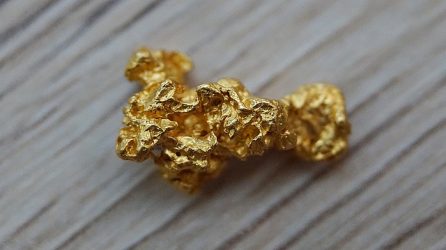The allure for gold has not lost its sheen even after thousands of years. Gold is a finite resource and has found new uses all along. It explains why gold prices continue to increase year after year. Investment in physical gold is still considered as one of the safest options.

While the gold rush may be long gone, it does not mean that all the world’s gold has been mined. There is still a significant amount of gold buried inside earth. As per rough estimates, more than 50,000 tons of gold still remains to be mined. If you can get even a small fraction of this, you can end up being a millionaire.
All you need is some patience, the right tools and equipment and the best places to search for gold. Below are some places that have a high possibility of finding gold in the United States.
Nevada Desert – Commercial mining in Nevada contributes around 75 percent of the total gold produced in the United States. While much of the high yielding areas are privately owned, there are some patches still available for recreational purposes. One such area is the Rye Patch State Recreation Area located in Lovelock. This is around 90 miles northeast of Reno. Most recreational gold explorers in this area rely on metal detectors to find gold. You can find gold flakes and nuggets in this area.
South Fork American River – This is where the original California Gold Rush had started. While large scale gold findings have long stopped, prospectors still explore the river for its hidden treasures. One area that is accessible to the public is the Auburn State Recreation Area. This is located along the border of Placer and El Dorado Counties. As using heavy equipment is banned, you will have to rely on the traditional gold panning technique.
Alaskan Yukon River – The Canadian Yukon is famous for its Klondike Gold Rush. At its peak in the early twentieth century, more than 100,000 gold hunters used to explore this area. As of now, much of the gold yielding areas are under control of professional mining operations. But some areas are still accessible to the public. One such area is the South Fork Koyukuk River, which is part of the Yukon River. This is one of the popular gold hunting spots for amateur gold hunters.
Colorado mining hot spots – One of the popular mining hot spots in the area is the Cache Creek mine in Twin Lakes. It is now a preserved open space. The area is open for gold prospectors, but only panning is allowed. Users need to pay a small fee to access the area. Due to environmental concerns, none of the motorized equipment is allowed.
Lynx Creek, Arizona – In terms of gold production, Arizona is ranked fifth in the United States. Arizona is also known for its copper and silver mines. Gold hunters can explore more than 100,000 acres of land in Prescott National Forest. Users can also set up camps for up to 14 days. Most gold hunters have reported finding gold flakes in the Lynx Creek. The area has some rules and regulations that gold hunters need to follow.
 Newspatrolling.com News cum Content Syndication Portal Online
Newspatrolling.com News cum Content Syndication Portal Online







